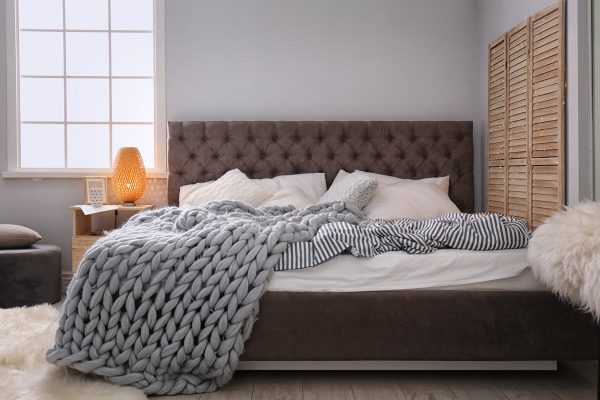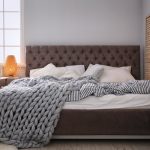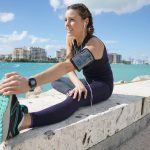Stay Cool, Stay Dry, Stay Focused: The Magic of Moisture-Wicking Activewear

Estimated reading time: 5 minutes
Table of contents
Benefits of Moisture-Wicking Activewear
Moisture-wicking activewear is a game-changer for athletes and fitness enthusiasts. One primary benefit is its ability to keep you cool and dry, significantly enhancing performance and comfort. This type of fabric pulls sweat away from the skin to the exterior of the clothing, where it evaporates quickly. Fabric wholesalers widely use this advanced fabric technology, making it accessible to various apparel brands.
In addition to improved comfort, moisture-wicking clothing can reduce the risk of skin irritations and chafing. These fabrics are especially beneficial for high-intensity activities where sweat is constantly challenging. The unique feature of staying dry means athletes can maintain focus for longer periods, as distractions caused by discomfort are minimized. Runners World highlights how these technical fabrics provide superior performance, making them a staple in many athletes’ wardrobes. This ability to support peak performance is why athletes prefer moisture-wicking materials over traditional fabrics.
How Moisture-Wicking Fabrics Work
The science behind moisture-wicking fabrics revolves around capillary action. These fabrics are engineered with synthetic fibers that move moisture from the body through minuscule channels. Natural fibers like cotton tend to absorb moisture, making them less effective for intense physical activities. Using high-performance synthetic fibers, moisture-wicking fabrics ensure sweat is drawn away quickly and efficiently.
Several moisture-wicking fabrics also include antimicrobial treatments to combat odor-causing bacteria. This attribute is essential for maintaining freshness during long workouts or consecutive training days. It’s not just the moisture management but also the odor control that makes these fabrics a worthwhile investment for active individuals. For those interested in the finer details of how these fabrics function, a comprehensive overview can be found in the Smithsonian Magazine. Understanding the technology behind moisture-wicking fabrics can help users appreciate the engineering and thoughtfulness that goes into creating these high-performance materials.
SEE ALSO: Top Sports and Fitness Gadgets Revolutionizing Training
Choosing the Right Activewear
Selecting the right moisture-wicking activewear involves considering several factors. Look for high-quality synthetic materials like polyester, nylon, or specific branded technologies. These materials are specifically designed to provide superior moisture management. Avoid blends with high cotton content, as these will compromise the moisture-wicking capabilities. Cotton tends to hold moisture, making it less effective for high-intensity workouts where quick drying is vital.
Fit and comfort are also crucial. Opt for garments that allow freedom of movement while being snug enough to facilitate moisture transfer. Extra features like flat seams can reduce friction and irritation on the skin. Mesh panels incorporated into the design can enhance breathability and reduce the risk of overheating. Choosing the right gear can significantly impact your performance by providing comfort and efficient moisture management, whether you’re embarking on a long run or participating in a high-energy workout session.
Care and Maintenance of Moisture-Wicking Clothing
Proper care extends the lifespan and performance of your moisture-wicking garments. Always follow the manufacturer’s care instructions. Typically, washing in cold water and air drying are recommended to maintain the fabric’s moisture-wicking properties. Dryer heat can degrade the synthetic fibers, reducing their effectiveness over time.
Avoid fabric softeners and bleach, as these chemicals can coat the synthetic fibers and hinder their ability to wick moisture. Instead, use mild detergents designed for synthetic fabrics. Also, turning your garments inside out during washing can help preserve their quality and appearance by reducing pilling and wear on the exterior surfaces. By taking these simple steps, you can ensure that your moisture-wicking activewear continues to perform at its best for years to come.
Top Sports and Activities for Moisture-Wicking Activewear
Moisture-wicking fabrics are ideal for high-intensity activities that produce a lot of sweat. Running, cycling, and high-intensity interval training (HIIT) are excellent examples. Runners, for instance, greatly benefit from clothing that keeps the wearer cool and dry, reducing the risk of chafing and other discomforts during long distances.
Yoga and Pilates practitioners also find moisture-wicking clothes beneficial, particularly for hot yoga sessions where maintaining dryness can significantly enhance comfort. Similarly, team sports like soccer and basketball see improvements in player performance with suitable moisture-wicking gear, as it helps manage the copious amounts of sweat produced during intense games. Having the right gear can make all the difference in maximizing comfort and maintaining peak performance throughout any physical activity.
SEE ALSO: Chillin’ With Wellness: Your Ultimate Guide to Winter Health
Real-Life Success Stories
Athletes and fitness enthusiasts rave about the benefits of switching to moisture-wicking activewear. One marathon runner noted a significant reduction in chafing issues after making the switch, while a cyclist mentioned experiencing less fatigue and better overall comfort during long rides. The ability of moisture-wicking fabrics to keep the body dry allowed these athletes to focus more on their performance than their discomfort.
Beyond professional athletes, weekend warriors and gym-goers have reported enhanced workout experiences and better overall satisfaction with their fitness regimen thanks to these high-performance fabrics. For example, a recreational hiker shared that switching to moisture-wicking socks eliminated blisters during long treks. These real-life experiences confirm how transformative moisture-wicking clothing can be, enhancing performance and enjoyment in various activities.
Environmental Impact of Moisture-Wicking Fabrics
Many moisture-wicking fabrics are synthetic, raising questions about environmental impact. However, advancements are being made to create more sustainable options. Recycled polyester and eco-friendly manufacturing processes are becoming more common, reducing the negative impact on the environment. Brands increasingly focus on sustainability, aiming to balance performance with environmental responsibility.
Understanding the full scope of sustainable practices in fabric manufacturing can help consumers make informed decisions. For more information, consider reading up on the efforts to create sustainable activewear. By choosing brands that prioritize sustainability, consumers can support the movement towards more eco-friendly activewear solutions without compromising performance or comfort.







